 |
|
| Issue #95 • September/October, 2005 |
In the March/April 2005 issue of Backwoods Home Magazine, this space was devoted to the “Winchester ’94: the Classic Backwoods Home Deer Rifle.” And you know, even when I was writing that paean to the lever-action .30-30 that sold over five million units since the year 1894, I knew that I’d have to follow up with an article on the other such deer rifle, Marlin’s Model 336.
Marlin introduced their Model 1893 rifle in the eponymous year, initially in old black powder calibers like the .32-40 and .38-55, but soon chambered for the .30-30 Winchester round. Some 900,000 of these guns were made between then and 1935, when the company replaced it with their sleeker Model 36. Where Winchester emphasized a lean, mean straight-stock design with a slim, spare fore-end, the Marlin had a pistol grip style stock with its lever loop bent accordingly, and a fuller fore-end. These attributes were carried into the newer gun, destined to be their longest-lived deer rifle: the Model 336, introduced in 1948 and still Marlin’s most popular hunting rifle.
|
The rest, as the saying goes, is history. At the SHOT Show—it stands for Shooting, Hunting, and Outdoor Trade, the largest trade show in the firearms industry—in Las Vegas in January, 2005, I had the privilege of looking over a handsomely engraved rifle that was Marlin’s four millionth Model 336.
From the early days, the Marlin’s solid frame with ejection to the right side (instead of out the top of the mechanism, as with the Winchester) was one of its distinguishing features. This continued with the Model 336 and its many variations. As telescopic sights became more popular among American outdoorsmen, this became a key advantage. The top-ejecting Winchester would have its mechanism blocked by a telescopic sight in its usual position atop the rifle’s frame. This led to all manner of adaptations. With the stock Marlin, a hunter could simply attach an ordinary scope on an ordinary mount in the traditional position.
The 336 was a stronger rifle than the Model 36 that preceded it, not only in terms of more modern metallurgy but because of its rugged and simple round bolt mechanism that rolled smoothly inside the receiver, or frame. There are many who believe it was, from the beginning, a stronger rifle than the Model ’94 Winchester to which the Marlin played Avis opposite Hertz. Slightly heavier, in part because of its action design and partly because its more generous stock design simply had more wood on both ends, it was never weighed more than a pound over its Winchester equivalent of the same barrel length and caliber, and the difference was often even less than that, depending on the density of the wood.
|
Most, if not all Model 336 rifles were produced with the company’s trademark Micro-Groove™ rifling. Marlin’s thesis was that many shallow grooves in the barrel would stabilize a bullet better than a few deeper ones. Whether this is truly the case remains about a two-beer debate in the shooting club bar after the guns are put away. Personally, I’ve always found the Marlin to be a little more accurate than the equivalent Winchester, but by so small a margin as to be inconsequential. (Whether a quarter inch or even half an inch better accuracy at a hundred yards matters in a woods rifle is another two-beer debate.)
What no one argues is that the Marlin is much easier to take apart for maintenance and repair than the Winchester. As a youngster, I was frustrated that I needed my dad’s help to get my Model 1894 back together, but when I got my first Model 336 as a junior high school student, I was delighted to discover how simple its takedown and reassembly were. Simply back out the screw that holds the lever to the receiver, and everything slides out nicely for cleaning and lubrication—and more important, goes back together almost as easily. In a backwoods environment, this can be the most decisive advantage of all.
When I discussed the matter of relative ease of scope mounting in the Winchester ’94 article in the March/April issue of BHM, I wrote, “…and the telescope’s magnification is a safety factor in that it helps the woodsman identify the target.” This did not set well with reader John B. Williamson of Spokane, who wrote, “I’m sure Mr. Ayoob didn’t mean it the way it sounded. The telescope’s magnification is a safety factor in that it helps [a] woodsman identify the target. You NEVER, NEVER use the scope to identify a target unless you know it is a 4-legged animal, not a 2-legged one. If in doubt use binoculars. If you notice as soon as someone sight(s) thru a scope their finger is inside the trigger guard usually resting on the trigger.”
|
When scanning the woods, Mr. Williamson is 100% correct: if you use your telescopic sight as a spyglass, you are pointing a loaded rifle at everything you look at, which may include other hunters. Get caught doing that, and you face a range of results that can be tragedy at the worst end of the scale, loss of your hunting license at the lighter end, and a charge of felony aggravated assault (pointing a lethal weapon at another person) in the middle.
By “identify the target,” what I mean is a last-second verification that what you are aiming at is in fact a game animal. The scope can tell you if that white flash you saw with your naked eye in the shadows of the forest was the deer’s tail, or a man’s handkerchief. On the lower end of the scale, it can also tell you whether you really saw a buck’s antlers, or an off-limits doe standing amid some antler-like branches.
As a younger man, I hunted with iron sights on Winchester and Marlin alike. I was confident of my sharp eyes; the scope broke up the classic lines of the rifle and made it more awkward to carry all day; and in thick woods, I knew I’d be encountering Bambi at short range anyway. Today, older and wiser and dimmer of eye, I prefer magnifying optics on most of my hunting rifles, and still consider it a safety feature.
Over the years, the Marlin 336 has been made in many calibers. As with the Winchester ’94, the .30-30 has been overwhelmingly the most popular. However, I’ve seen a very few in .32 Special. It was made for several years in .219 Zipper, a light varmint cartridge that spat a 56 grain hollow point at 3110 feet per second. However, varmint hunters wanted super-accurate bolt action rifles, not light weight lever guns, and the 336 never caught on in this caliber. The 336 was also produced in the more powerful .375 Winchester cartridge, which never became popular either.
|
No, the round that made a difference was Marlin’s second most popular in this rifle: caliber .35 Remington. Remington created this cartridge in 1906 for their then-revolutionary Model 8 semiautomatic hunting rifle, and in 1952, Marlin began chambering the Model 336 for it. Throwing a 200 grain soft point bullet at 2210 feet per second, it generated 2170 foot-pounds of energy. With a 170 grain bullet at about the same speed, the .30-30 comes up short by comparison with only 1860 foot-pounds of energy.
In the early ’50s, Marlin advertised this as the “brush-busting .35,” though today we know from exhaustive testing that virtually no bullet can go through heavy brush without being deflected. However, as an active deer hunter in my younger days, I noticed that the .35 seemed to take down white-tails with distinctly more authority than the more popular .30-30. Noted Henry M. Stebbins, one of the great rifle authorities during that period in American firearms history, “…the 336 was not planned as a mountain rifle. Adding the .35 Rem to its lineup made it one of the best-liked rifles for those who want considerably more than .30-30 power, but not high velocity or flat trajectory.” (1)
When I started junior high school my deer rifle was a long-barrel Winchester ’94, caliber .38-55. It was heavy and kind of clunky with its 26″ barrel, and achingly old-fashioned with its crescent butt plate and all. Kids don’t like old-fashioned things, so I saved up for a new Bambi-buster. I wanted a short barrel carbine that was light and handy, and was already habituated to the lever action, so the choice pretty much came down to Marlin and Winchester.
I was quite taken by what seemed like a smoother action in the Model 336. The Winchester required a little bump at the far end of the lever stroke to lift the cartridge carrier, or it wouldn’t chamber the round. The Marlin had no such idiosyncrasy, and working its action it seemed lighter and smoother and arguably even faster.
|
It also felt better in my hands than the Winchester with its slim, straight wood. The aforementioned Henry Stebbins explained this subjective characteristic well. “Design makes the 336 a handy rifle for the timber,” he wrote. “Forefinger and thumb fall naturally on trigger and hammer, the firing hand sends the lever out and back readily if the stock is short enough for the woods-hunter who uses it, and grip and forestock are big enough to make shooting comfortable and to give sure command of the rifle. If the forestock seems too wide to a short-fingered shooter—and it might, even on the slimmed down Texan carbine with straight grip and full magazine—he could taper it just ahead of the receiver. Then it would suit him in carrying. The comb and pistol grip stand well back, and if you wear heavy gloves against the cold you’ll be glad that they do.” (2)
My dad and I found a used Model 336 in excellent condition at Stan Sprague’s gun shop in Hooksett, NH. It was the SC model, with 20″ carbine barrel and 2/3 length magazine. The action worked smooth as glass, and the previous owner had installed an aperture sight. Best of all, it was chambered for .35 Remington. Dad bought it for me for about $65. I unscrewed the aperture in the peep sight so I could aim through a larger opening, a 19th Century deer hunter’s trick that Jeff Cooper re-popularized in the late 20th Century as the “ghost ring” sight concept, and I was good to go.
That was my deer rifle for most of my teen years, and I loved it. It helped me learn a lot of things, one of them being that if you busted your butt to get “all-A” report cards in school, the teachers of the early ’60s would be lenient if you played hooky for most of deer season.
|
By age 16, I had switched from traditional stalking to the deer drive method. This involves a group of men moving loudly through the woods and “pushing” the deer ahead of them toward a line of “standers,” riflemen taking their turn as shooters. As a stalker, I had loaded my lever action in the morning and unloaded it at night when I came out of the woods, and levering the rounds out of the gun once a day was hardly a chore. In driving, however, we were in and out of pickup trucks several times a day, which of course involved carefully unloading the rifle before you got into the truck and reloading after you debarked again. Jacking rounds through a lever action several times a day got to be a pain in the butt, and it chewed up the cartridges at the rims and noses, which could later compromise both feeding and accuracy. I noticed that most of the adults I hunted with had box magazine rifles, usually the Remington Model 742 semiautomatic or Model 760 slide action, or less often, the Winchester Model 100 autoloading .308. These were much handier to unload and reload. Trying all of them, I found the Winchester 100 the more accurate, and in my hands the better balanced, being somewhat less muzzle heavy. After a couple of years, I traded the sweet little Marlin .35 for a Winchester Model 100 .308.
I have that Model 100 still, and many good memories come with it. However, I wish I had saved up longer so I could have bought it outright and kept the Marlin as well. The more powerful .308 Winchester cartridge didn’t drop a deer a darn bit faster than a 200 grain .35 Remington slug, and even though the Model 100 could group in an inch and a half at a hundred yards then and now, it was not a whit more accurate than my old Marlin 336 SC. A lot of memories went with that Marlin, and I regret my decision to trade it in.
As my life went on, I got away from hunting for many years, and though I went back to it, I never did so with the ardor I had applied to the sport in my youth. I didn’t get another Marlin Model 336 until my 40s, and it was sort of by accident.
I owned an apartment building, and one of my tenants apologized for being short on the rent. He paid me with his deer rifle, a 336 Marlin .30-30 with a K2.5 Weaver telescopic sight. The rifle was clean on the inside, rough and weather worn on the surface, and somehow the scope looked funny. Upon examination, I realized that the previous owner had mounted it incorrectly, turned a quarter of the way over onto one side. In effect, the windage knob now corrected for elevation, and the elevation adjustment knob now controlled the windage. When I stopped laughing, I decided to take it to the range to see how this had affected point of aim/point of impact before I re-mounted it correctly.
|
I picked up one of those Federal brand 24-round value packs of generic soft nose hunting ammunition at Wal-Mart, and headed to the gun club. Jacking the first round into the chamber, I was reminded of the smooth action I had come to love so long ago on my Marlin .35. I put the crosshairs on the bullseye and began shooting, noticing that the mild .30-30 round’s recoil was softer than I remembered the .35’s having been.
With only two and a half power scope magnification, I couldn’t quite see the group downrange, so I set the empty rifle on the bench and walked to the target. The little .30-30 had not only shot dead center where it was aimed, but had put every shot into a group that measured only an inch and a quarter, center to center on the farthest-apart bullet holes.
I decided to leave the little Marlin exactly as it was.
There are nearly as many Marlins as Winchesters still serving rural American families, with close to ten million specimens produced by the two companies combined. More than that, if you count models other than the Winchester ’94 and the Marlin 336. Many of them are marked with other names. Marlin produced them under the “J.C. Higgins” brand for Sears, Roebuck; under the “Western Field” brand for Montgomery Ward; and if memory serves, under the “Revelation” brand for Western Auto Stores. There may have been others. The “trade brand” guns may have birch instead of walnut stocks, and less fancy blue finishes, but underneath they’re all the same good rifle.
|
In the year 2000, Marlin introduced the Model 336 M, in stainless steel. This makes particularly good sense in hostile weather environments. They have also, in the last few years, offered these rifles with camouflage stocks.
Marlin’s crushingly powerful Model 444 in caliber .444 Marlin and Model 1895 in .45-70 are popular for close range hunting of moose and large bear. Both are built on the Model 336 mechanism, though not catalogued as part of the 336 series. Where Winchester offers its pistol caliber lever guns on the rifle-length Model 94 frame, Marlin chooses to use a smaller action, which they call Model 1894, in calibers like .357 Magnum and .44 Magnum. The latter is particularly handy for close range deer hunting. In cowboy action shooting matches, what is generally perceived as the smoother action of the Marlin has made it the overwhelming choice of the winners over the Winchester, at least in the matches I’ve been to.
Like Winchester, Marlin felt the need to put a cross-bolt safety onto the rifles many years ago, to render them drop-safe when carried with a cartridge in the chamber. With either brand, most professionals are now more comfortable carrying them with the chamber empty, and levering a round out of the magazine and into the launch tube only when intending to fire immediately. Lowering the hammer onto a live round can be tricky. Reader Williamson, a retired hunter education instructor, notes, “Nine out of every ten students drop the hammer on the firing pin as their finger slips off the hammer.” It’s safer to just leave the chamber empty.
Remember that the telescopic sight gives a safety factor of last-instant confirmation of target verification, as well as more accuracy for most people, and that most Marlins are easier to equip with scopes than most Winchester lever actions. The rest of it is a matter of personal preference.
The Marlin Model 336 and the Winchester Model 94 are both classic American rifles, their histories inextricably linked with the traditions of rural America. Owning either is owning a piece of genuine Americana. If it’s that difficult to choose between them, do what I’ve done, and put one of each in your gun safe.
(1) Stebbins, Henry M., “Rifles: A Modern Encyclopedia,” Harrisburg, PA: The Stackpole Company, 1958, P. 120.
(2) Ibid.


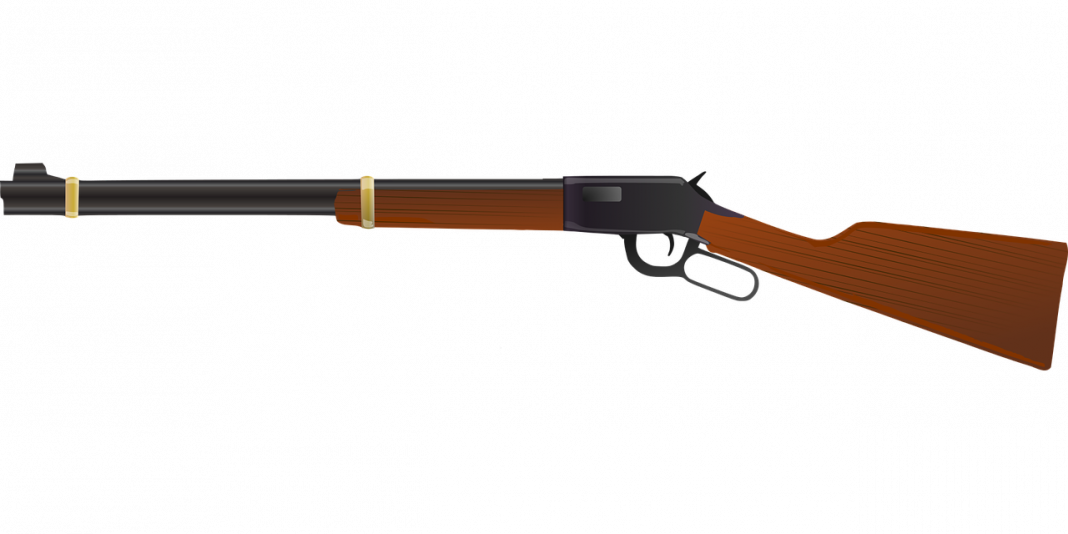








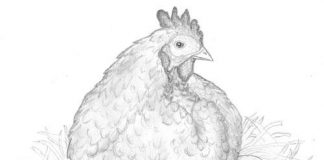







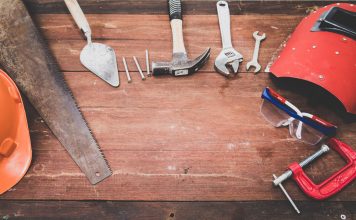

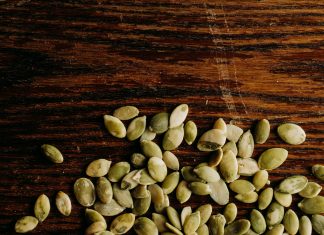
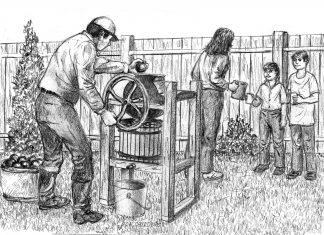
Except that the 35 Remington was introduced in 1950, not 1952. I have one, and the serial number starts with a “G”. My father purchased it brand new in 1950.
this was a great story we need more like this …